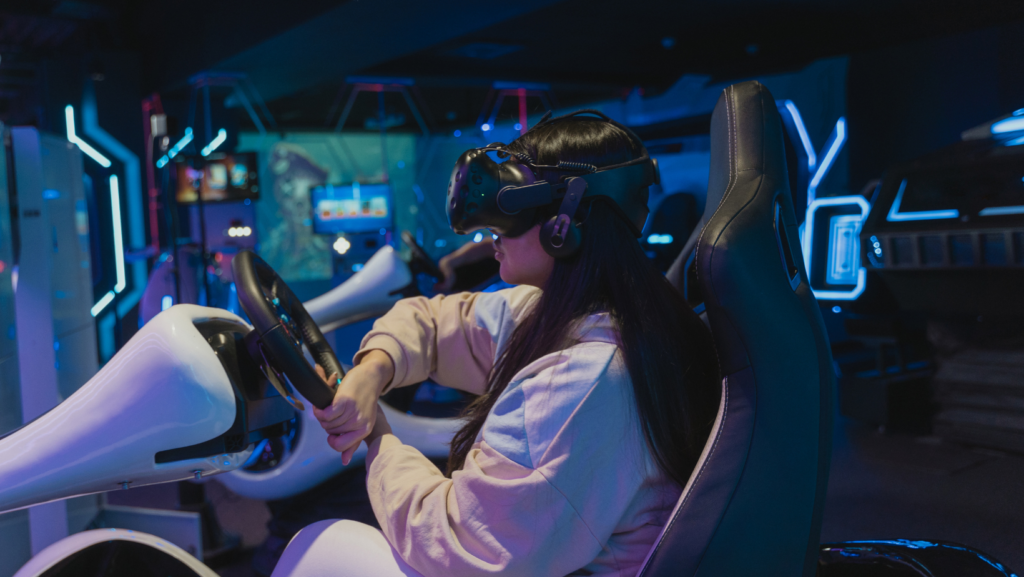What lies ahead in the ever-evolving world of gaming consoles?
Join us as we delve into the possibilities and prospects that lie ahead, exploring the potential game-changers that could shape the future of gaming entertainment. We will explore the evolution of consoles, dissect the current landscape, and predict what the future may hold for gamers everywhere.
The journey of gaming consoles has been nothing short of remarkable. From the rudimentary systems of the early 1970s, such as the Magnavox Odyssey, to today’s highly sophisticated machines, the evolution has reflected both technological advancements and changing consumer demands. In the early days, gaming was a simple pastime where players interacted with basic graphics and limited gameplay. However, as technology advanced, so did the complexity and immersion of games.
The introduction of 16-bit systems in the late 1980s marked a significant turning point, allowing developers to create more intricate games with improved graphics and sound. The competition between Nintendo and Sega captured the imagination of gamers, leading to an explosion of creativity in game design. As the years progressed, the advent of 3D graphics changed the landscape, ushering in a new era of gaming that focused on realism and storytelling.
Fast forward to the 21st century, where consoles like the PlayStation 5 and Xbox Series X have set new standards for performance, graphics, and user experience. The focus has shifted towards high-definition graphics, immersive virtual reality experiences, and online multiplayer capabilities. As we stand on the brink of the next generation of consoles, understanding this evolution is crucial to appreciating what the future may hold. Together with the apostar team, we will talk about this in more detail.
Current Console Gaming Landscape
In the current gaming landscape, the competition between Sony and Microsoft remains fierce. The PlayStation 5 has garnered significant attention for its innovative DualSense controller, which offers haptic feedback and adaptive triggers, enhancing the overall gameplay experience. Meanwhile, the Xbox Series X has positioned itself as the most powerful console on the market, boasting impressive technical specifications and a comprehensive game subscription service through Xbox Game Pass.
Additionally, Nintendo continues to play a crucial role in the console market with its hybrid console, the Nintendo Switch. By combining handheld and home console gaming, Nintendo has carved out a unique niche, appealing to casual gamers and hardcore fans alike. This diverse landscape highlights how different consoles serve varied demographics, from those seeking high-octane graphics to others who prioritize accessibility and innovative gameplay.
As we look towards the future, the current state of console gaming is characterized by intense competition, innovative features, and a growing emphasis on community and online experiences. The success of each console hinges not only on technological advancements but also on understanding and meeting the needs of the gaming community.
PlayStation 6: What to Expect
As speculation mounts regarding the PlayStation 6, gamers are eager to learn what innovations Sony will bring to the table. Based on the historical trajectory of the PlayStation brand, we can expect a focus on enhanced graphics, faster load times, and an even deeper integration of virtual reality technology. Sony has made significant strides in VR with PlayStation VR, and it’s likely that the next console will continue this trend, possibly integrating VR capabilities right into the console architecture.

Moreover, backward compatibility is becoming increasingly important to gamers, and Sony may capitalize on this by allowing users to play a vast library of older titles seamlessly. The PlayStation 5 already supports a selection of PS4 games, and expanding this feature could entice longtime fans to invest in the new console. Additionally, with the growing importance of online services, there may be a stronger emphasis on PlayStation Network enhancements, providing a more robust online community and subscription services.
Another area of interest is the potential integration of AI and machine learning technologies. These advancements could lead to more personalized gaming experiences, where the console adapts to the player’s style and preferences, enhancing gameplay and engagement. As we continue to watch for official announcements from Sony, the excitement surrounding the PlayStation 6 is undeniable, and gamers are eager to see how it will push the boundaries of gaming technology.
Xbox Next: Anticipated Features
On the other side of the console war, Microsoft is preparing for its next generation with Xbox Next. The emphasis here is anticipated to revolve around the synergy between hardware and cloud gaming, leveraging the capabilities of Azure to create a seamless gaming experience. One of the most exciting prospects is the potential for cross-platform play, allowing gamers on different devices to compete against each other, thus broadening the gaming community.
Another anticipated feature is the integration of advanced AI to enhance game design and player interactions. By utilizing machine learning, Xbox Next could provide personalized gaming experiences that adapt to individual players’ skills and preferences. This could revolutionize how games are played, making them more engaging and enjoyable for everyone.
Furthermore, Microsoft’s commitment to Game Pass is likely to continue with Xbox Next, offering an extensive library of games at a subscription price. This model has already proven successful, changing the way gamers access and experience titles. With the next console, we may see even more exclusive titles and partnerships, further solidifying Game Pass as a must-have for gamers.
Rise of Cloud Gaming
As traditional console gaming continues to evolve, cloud gaming has emerged as a game-changer in the industry. Services like Google Stadia, NVIDIA GeForce Now, and Xbox Cloud Gaming have begun to demonstrate the potential of playing high-quality games without the need for expensive hardware. This shift towards cloud gaming offers several advantages, including accessibility and convenience, allowing gamers to play on various devices without the constraints of traditional consoles.
One of the most significant benefits of cloud gaming is its ability to democratize access to high-quality gaming experiences. With a stable internet connection, players can enjoy the latest titles without the hefty price tag associated with purchasing a new console. This opens the door for a wider audience to engage with gaming, from casual players to those who may have previously been priced out of the market.
However, while cloud gaming presents exciting opportunities, it also faces challenges that need to be addressed. Latency issues, bandwidth limitations, and the reliance on a consistent internet connection can hinder the experience for many players. As technology advances, these challenges may be mitigated, paving the way for cloud gaming to become a dominant force in the industry.
A Comparison of PlayStation 6, Xbox Next, and Cloud Gaming
When comparing the anticipated features of the PlayStation 6, Xbox Next, and the rise of cloud gaming, it’s essential to consider how each approach addresses the needs of modern gamers. The PlayStation 6 is expected to focus on delivering an unparalleled single-player experience, leveraging its strong lineup of exclusive titles and advanced graphics capabilities. Sony’s legacy in storytelling and immersive gameplay positions it well to continue winning over dedicated fans.
On the other hand, Xbox Next is likely to emphasize community and accessibility, with a focus on subscription services and cross-platform functionality. Microsoft’s commitment to cloud gaming could allow players to enjoy top-tier games without the need for expensive hardware, appealing to a broader audience. This strategy could redefine gaming as a service rather than solely a product, paving the way for more diverse gaming experiences.

Cloud gaming, while still in its infancy, presents a compelling alternative to traditional consoles. Its potential to make gaming more accessible and convenient cannot be overlooked. However, it will need to overcome technical barriers and establish itself as a reliable option for serious gamers. As we move forward, the competition between traditional consoles and cloud gaming will likely shape the future of the industry, pushing all players to innovate and adapt.
Impact of Technological Advancements on Console Gaming
The rapid pace of technological advancements plays a crucial role in shaping the future of console gaming. From improved processing power and graphics capabilities to the integration of artificial intelligence and machine learning, these developments are set to redefine the gaming experience. The next generation of consoles will likely harness these technologies to create more immersive and engaging environments for players.
Moreover, advancements in virtual reality and augmented reality are expected to play a significant part in the future of gaming consoles. As hardware becomes more capable of supporting these experiences, players can expect more titles that utilize VR and AR, leading to new forms of interaction and storytelling. This shift could attract a new demographic of gamers who are eager to explore these innovative experiences.
Additionally, the growth of high-speed internet and 5G technology is set to enhance online gaming experiences. Faster and more reliable connections will reduce latency and improve the overall quality of multiplayer gaming, making online interactions smoother than ever. As these technologies continue to evolve, they will fundamentally impact how games are developed, played, and enjoyed across the globe.
Consumer Preferences in the Gaming Industry
Understanding consumer preferences is paramount to predicting the future of console gaming. Gamers today are looking for experiences that are not only visually stunning but also offer rich narratives, immersive worlds, and the ability to connect with others. This shift in preferences has prompted console manufacturers to focus on delivering not just hardware but also engaging content and community-driven experiences.
Moreover, the increasing popularity of mobile gaming and casual gaming has influenced the industry significantly. As more players seek accessible gaming experiences, traditional consoles must adapt to meet these evolving demands. This may include offering cross-platform capabilities, allowing players to enjoy games on various devices without losing progress or functionality.
In addition to gameplay preferences, consumers are also increasingly concerned about sustainability and the environmental impact of gaming hardware. As awareness grows, manufacturers may need to consider eco-friendly practices in production and packaging to align with consumer expectations. This shift could influence design choices and the marketing strategies of console manufacturers moving forward.
Predictions for the Future of Console Gaming
As we look ahead, several key predictions can be made regarding the future of console gaming. Firstly, we are likely to see continued innovation in hardware capabilities, with both Sony and Microsoft pushing the boundaries of what their consoles can achieve. This could lead to even more realistic graphics, enhanced AI, and improved virtual reality experiences that will redefine how games are played.
Secondly, the integration of cloud gaming into traditional consoles may become more prevalent. As internet infrastructure improves and cloud technology advances, it’s possible that gamers will have the option to play high-end titles directly from the cloud, reducing the need for powerful hardware. This hybrid approach could offer the best of both worlds, combining the benefits of traditional console gaming with the accessibility of cloud-based services.
Finally, the gaming community will continue to evolve, with an emphasis on inclusivity and diversity. As developers strive to create games that resonate with a wider audience, we can expect more representation in storytelling, character design, and gameplay mechanics. This shift will not only enrich the gaming landscape but also foster a more welcoming environment for gamers of all backgrounds.



